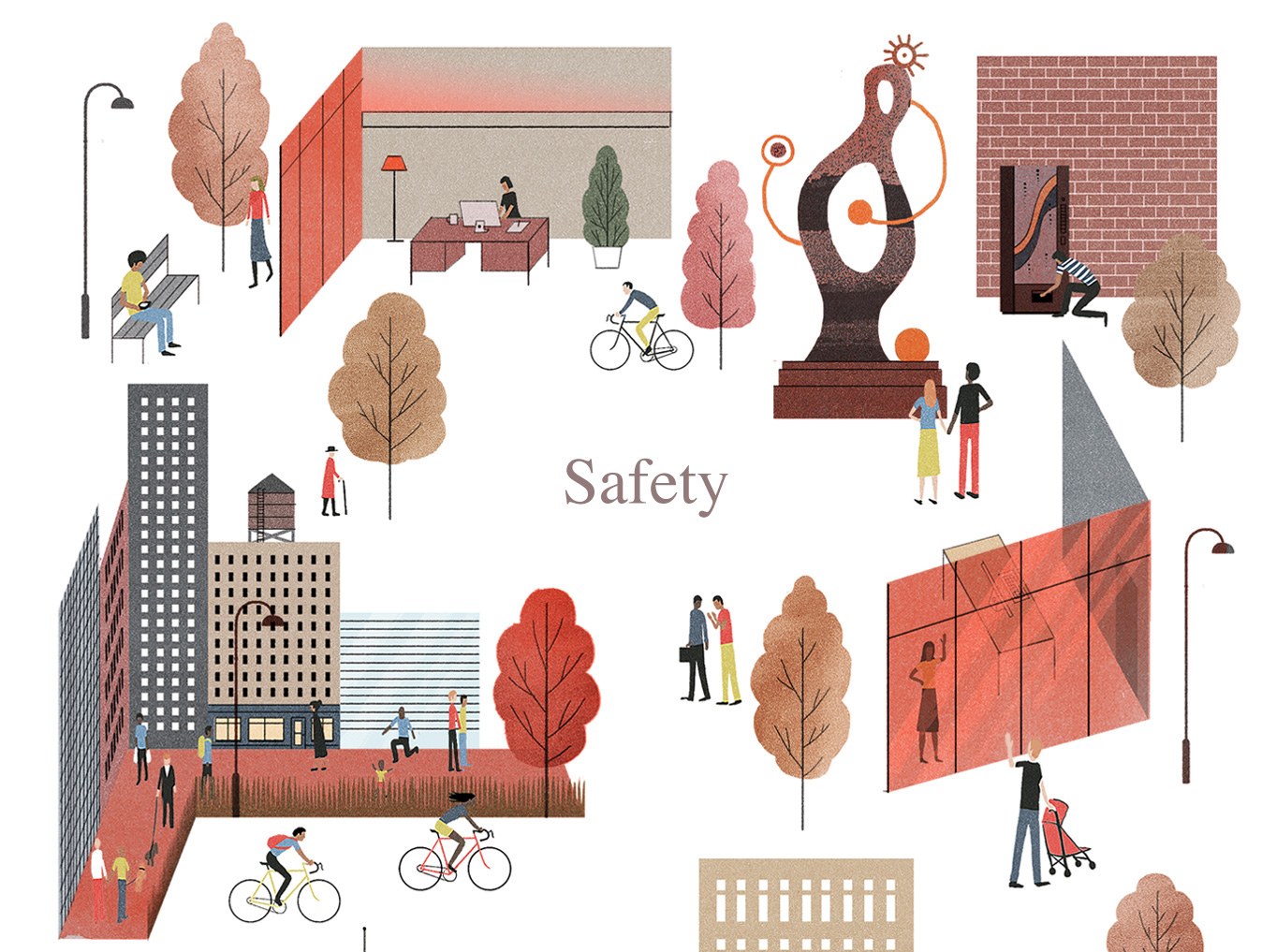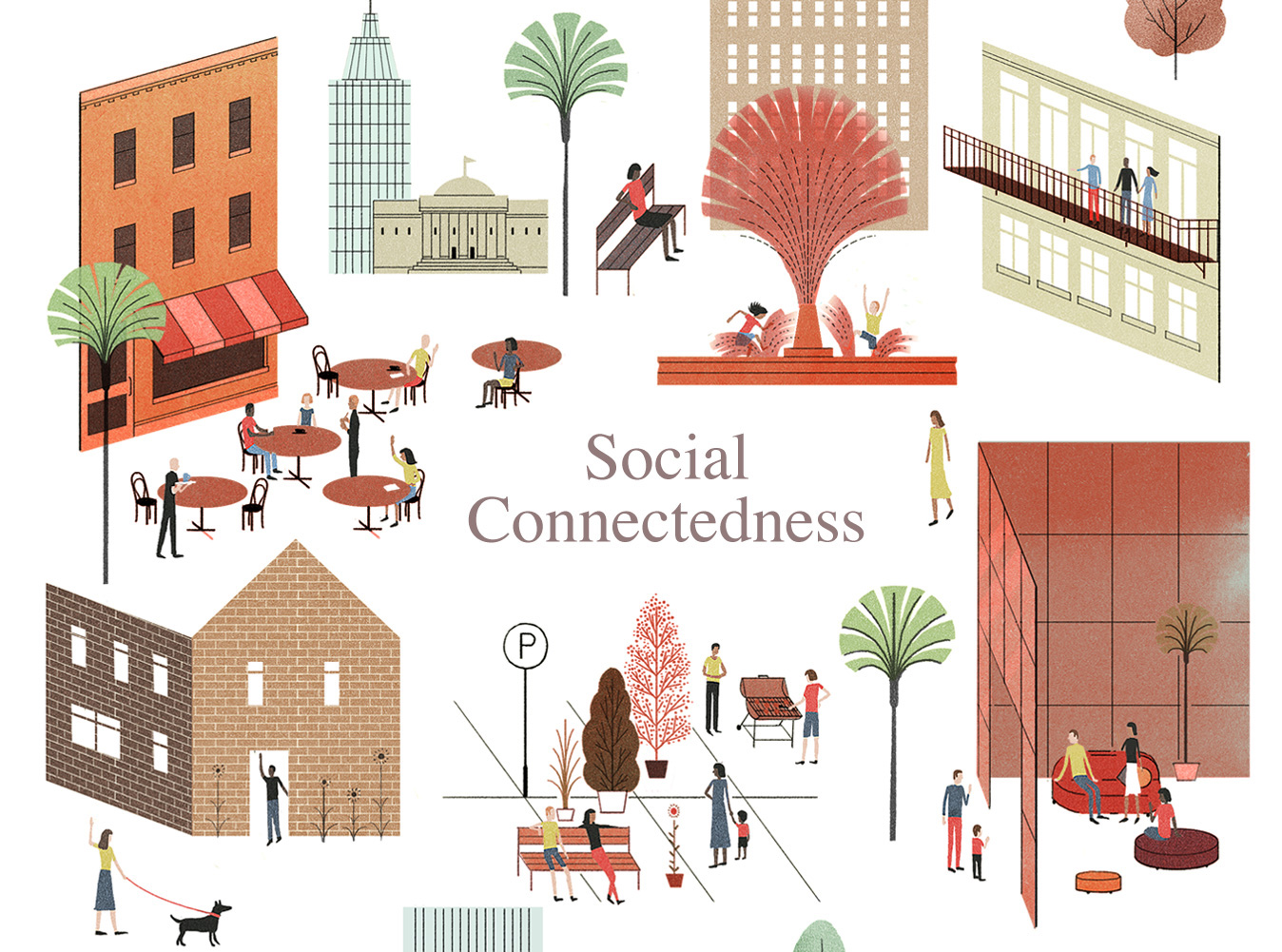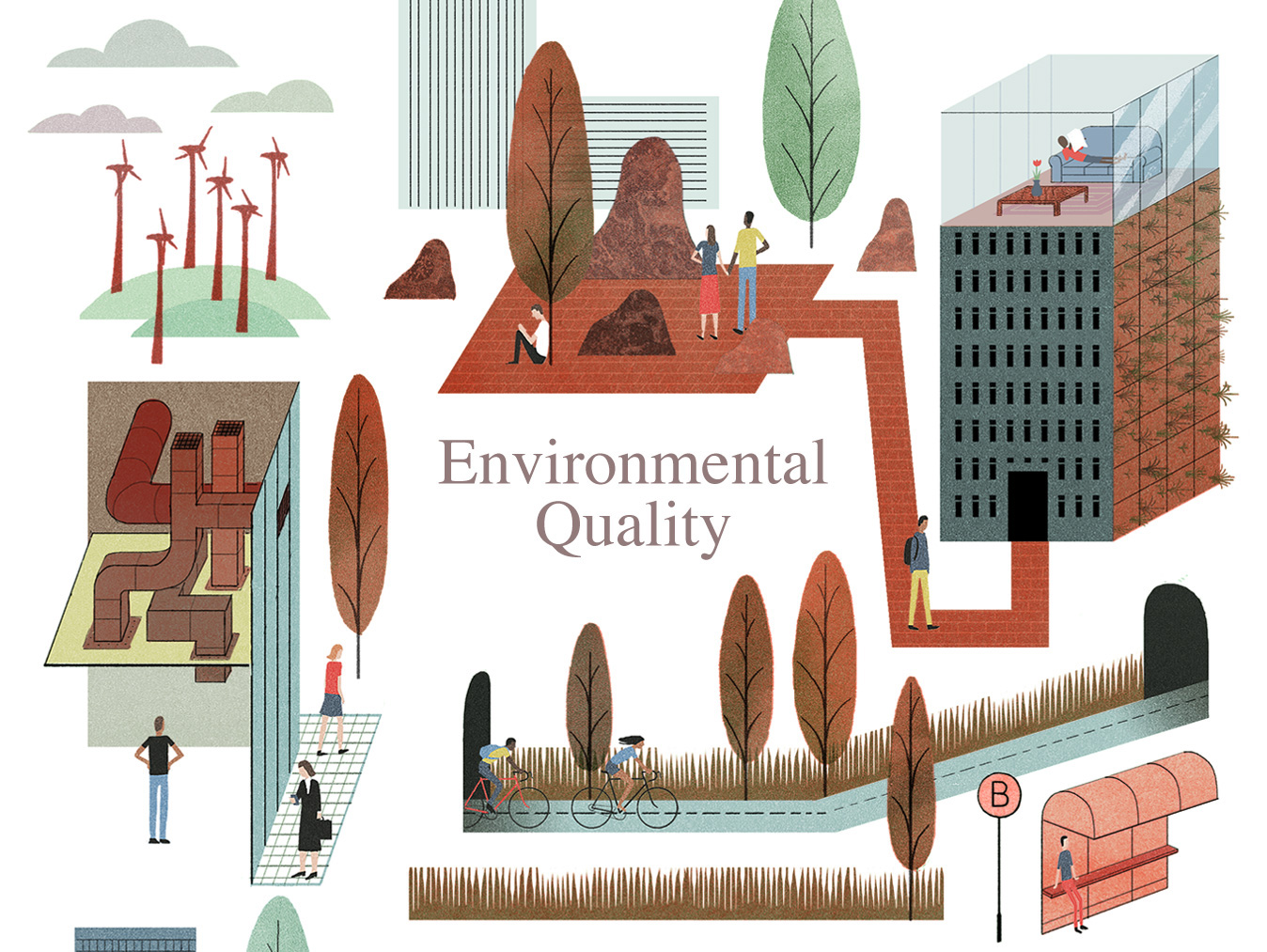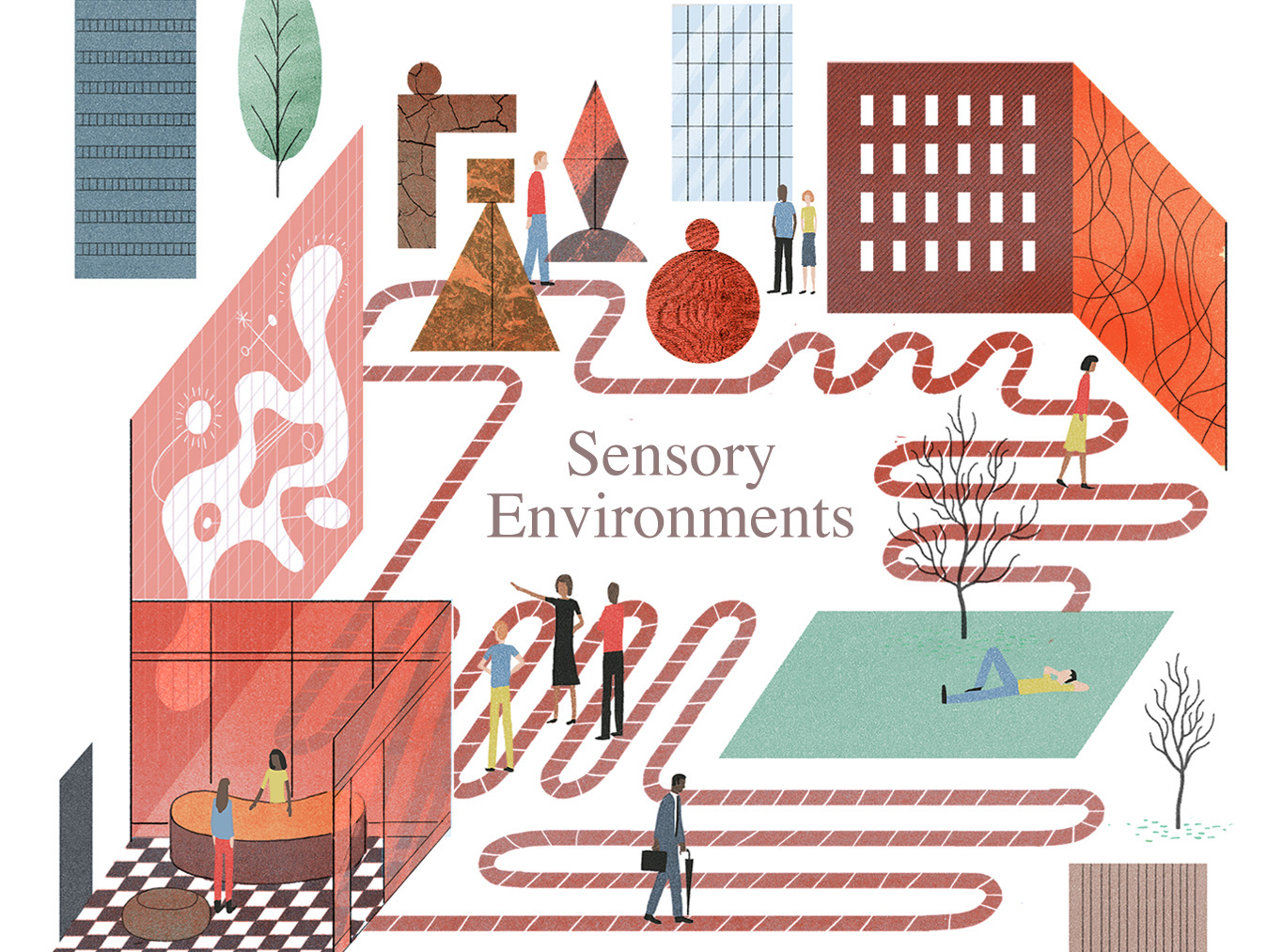Designing for health is more than designing a single building
It's designing places that bring neighbors together, using color and texture to help students excel in the classroom, incorporating nature into the office, and inspiring movement. Designing for health is about enhancing the physical and mental well-being of the people who live, work, and play in our spaces. It’s about building social and financial capital in communities both urban and rural. In this graphic, explore six opportunities to achieve health through design strategies: safety, social connectedness, environmental quality, sensory environments, physical activity, and natural systems.
Produced by the American Institute of Architects
First published in AIArchitect, November 21, 2014
Publishing Director: William Richards
Research: Matthew Welker, Assoc. AIA
Art Direction and Project Management: Jelena Schulz
Copyright 2014 by the American Institute of Architects
Illustration: Michael Kirkham | Programming: Link Studio









Social Connectedness
People thrive on relationships with each other. Strong networks within our families, our friends, and our neighborhoods improve our happiness, our well-being, and our resilience. Design that encourages play, communal dining, and a friendly “hello” is fundamental to behaviors such as civic participation, voting, and helping neighbors.
Select a link to learn more
- Building Resilience: Scaled strategies for healthy community design
- Health and Community Development
- From Health to Wellness
Close